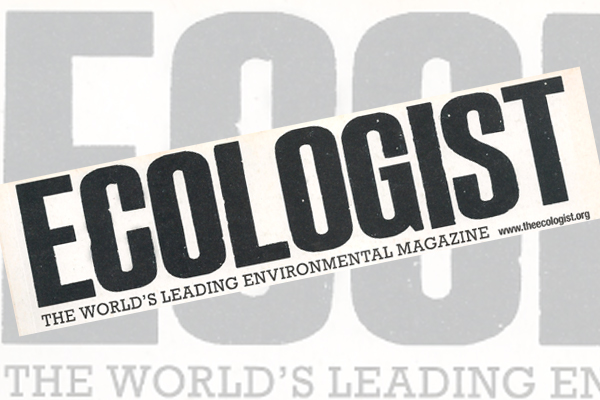Purely Cosmetic Changes

The US Food and Drug Administration has issued a hefty warning to the cosmetics industry – clean up your act or else. The question is: will the agency follow through?
If the FDA follows through, it would mean that more than 99 per cent of personal care products on the US market could be forced to carry a caution stating: ‘Warning: the safety of this product has not been determined.’
It’s a big ‘if’.
A law requiring this kind of warning on products has been in place in the US for some time. But the FDA has tended to turn a blind eye to transgressions, partly because of consumer disinterest and lack of understanding, and partly because the chemical industry, which generates so much profit and employs so many people throughout the world, is politically very powerful.
More lapdog than lion, the FDA has for years deferred to the ‘safety’ reports generated by the Cosmetics Ingredient Review (CIR). Variously described as an independent review panel and an industry watchdog, the CIR is neither. It was established by the industry lobby the Cosmetics Toiletry and Fragrance Association and continues to be funded by the companies it is supposed to be policing.
Even so, the FDA relies on the CIR’s yearly ingredient safety reviews as a core component of the public health safety net. As does the EU. Indeed, because cosmetics require no review or approval before they go on sale anywhere in the world, there would be no systematic examination of ingredients at all without the CIR’s assessments. It’s worth asking, however, whether a clearly biased review of cosmetic safety is really better than no review at all. A perusal of the CIR’s record is very telling.
In its near 30-year history the panel has reviewed just 11 per cent of the 10,500 cosmetic ingredients catalogued by the FDA. In other words, 89 per cent of the ingredients used in cosmetics remain unassessed. In three decades only nine ingredients have been banned from use in cosmetics.
Chemicals in cosmetics may be perceived as being at the ‘fluffy’ end of the environmental spectrum – something not too scary that enlightened beauty editors and a handful of celebrities can carp about without having to go too deeply into ‘the issues’.
But in reality the stakes are potentially high. On average, we each use nine cosmetic products a day containing an aggregate of 126 unique ingredients. Such safety testing as exists looks for immediate reactions such as skin redness, rashes or stinging. It does not look for potential long-term problems in humans or in the environment. Yet the industrial chemicals that go into things like shampoos and hand creams are not trace contaminants. They are the basic ingredients used in percentage amounts: the analogy used by the EWG is that they are like the flour used in making bread.
Absorbed into the body, they can be stored in fatty tissue or vital organs such as the liver, kidney, reproductive organs and brain. Even as cosmetic companies complain of unfounded hysteria over as yet unquantified harm, scientists are finding industrial plasticisers like phthalates in urine, preservatives known as parabens in breast tumour tissue, and persistent fragrance compounds like the hormone disrupter musk xylene in human fatty tissue and breast milk.
Medical research is proving that fragrances can trigger asthma – even in people who have no history of the condition, and that the detergents in shampoos can damage delicate eye tissue.
Epidemiological data links hair-dye ingredients with bladder cancer and lymphoma. If these problems had been linked to ingredients in drugs they would have been withdrawn from the market. At the very least, independent researchers would have been awarded sizeable grants to help produce definitive data.
But, because of a longstanding tendency for us all to confuse the perceived value of toiletries and cosmetics in modern society with actual evaluation, they remain in use and on sale. Scientists monitoring the environment are equally concerned. Along with pharmaceuticals, personal care products are now some of the most ubiquitous pollutants in our waterways.
Washed down the sink or toilet, they flow into sewage systems and are discharged into our water supply and onto the land. Municipal sewage treatment plants have no technology in place to check for or remove these chemicals.
The risks posed to aquatic organisms (by continual life-long exposure) and to humans (through long-term consumption of minute quantities in drinking water) are essentially unknown. There are major concerns about these products promoting microbial resistance and hormone disruption, and the consequences of daily exposure to other chemicals that are carcinogenic, mutagenic, teratogenic and neurotoxic remain unknown.
In Europe concerned campaigners will be watching the FDA’s actions with renewed interest. Here in the UK, the process for regulating toiletries and cosmetics is equally sluggish and complex: agreement and regulation have to be made at EU level. Whether the FDA is simply flexing its muscles or whether it really starts throwing punches may determine how vigorously, and successfully, consumers here can demand more honest labelling and better safety standards too.
- This article first appeared in the Ecologist June 2005












